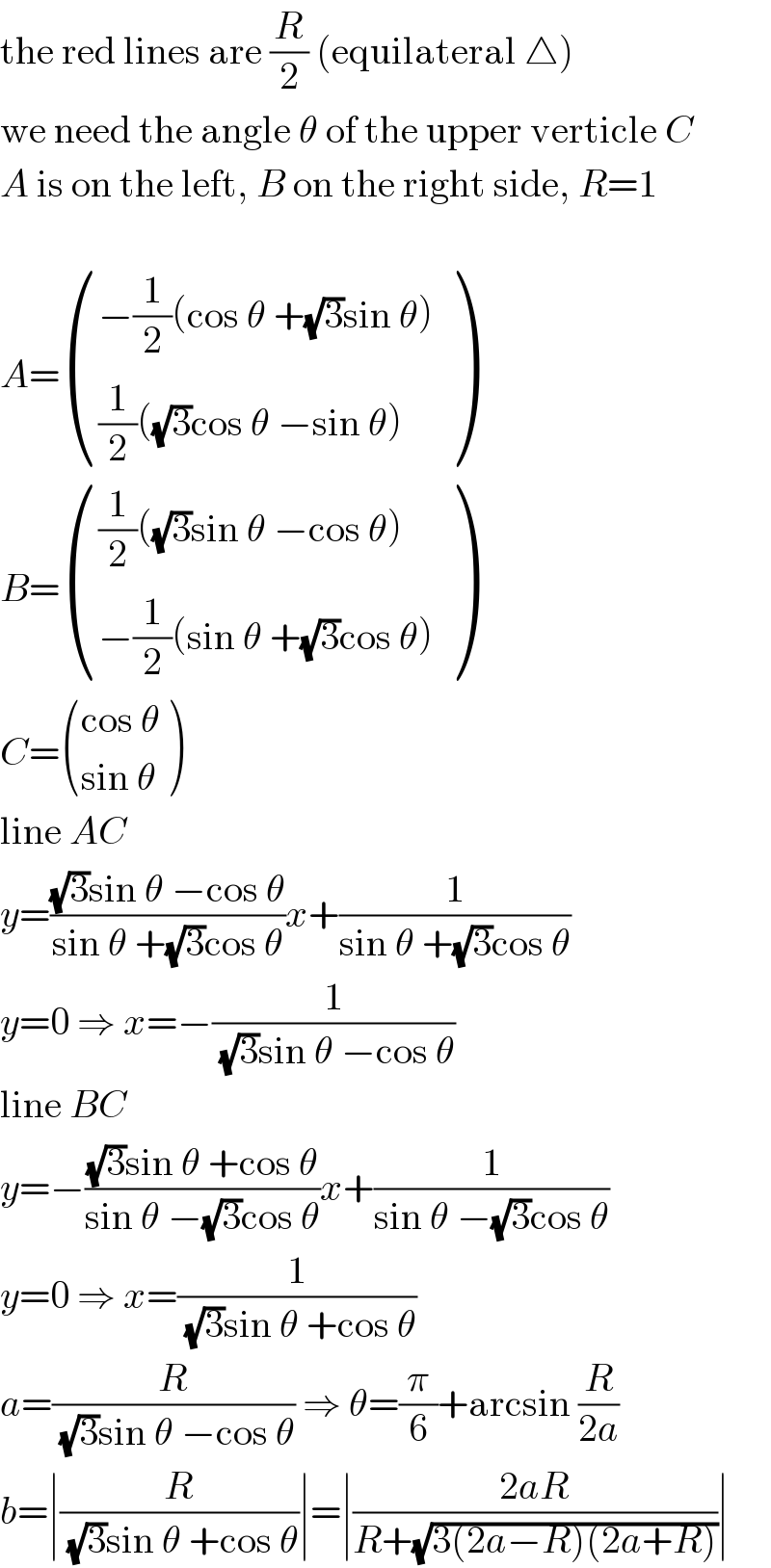
Question and Answers Forum
Question Number 39436 by ajfour last updated on 06/Jul/18

Commented by ajfour last updated on 06/Jul/18

Commented by ajfour last updated on 06/Jul/18
![3φ = 90° ⇒ φ=30° Rsin 30° = asin θ ⇒ sin θ = (R/(2a)) ⇒ cos θ = ((√(4a^2 −R^2 ))/(2a)) bsin (180°−2φ−θ)=(R/2) ⇒ bsin (60°+θ)=(R/2) b = (R/(2[((√3)/2)cos θ+((sin θ)/2)])) =(R/((√3)(((√(4a^2 −R^2 ))/(2a)))+(R/(2a)))) ⇒ b = ((2aR)/(R+(√(12a^2 −3R^2 )))) .](Q39453.png)
Answered by MJS last updated on 06/Jul/18

Commented by ajfour last updated on 06/Jul/18

Commented by MJS last updated on 06/Jul/18

Commented by Rasheed.Sindhi last updated on 07/Jul/18

Commented by behi83417@gmail.com last updated on 06/Jul/18

Commented by Rasheed.Sindhi last updated on 07/Jul/18

